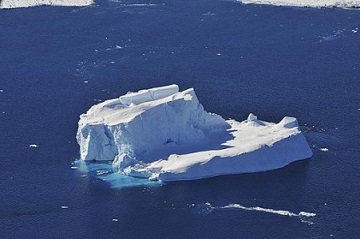Think the Planet Isn't Warming? Check the Ocean
 Over the past 15 years air temperatures at the Earth’s surface have been flat while greenhouse-gas emissions have continued to soar.” The Economist went to great lengths to point out that “the mismatch between rising greenhouse-gas emissions and not-rising temperatures … does not mean global warming is a delusion.” But the piece was predictably lauded by climate skeptics as “further evidence” of the case against climate change.
Over the past 15 years air temperatures at the Earth’s surface have been flat while greenhouse-gas emissions have continued to soar.” The Economist went to great lengths to point out that “the mismatch between rising greenhouse-gas emissions and not-rising temperatures … does not mean global warming is a delusion.” But the piece was predictably lauded by climate skeptics as “further evidence” of the case against climate change.Except that … it wasn’t.
This wasn’t an argument that “global warming has ‘stopped.’” The past two decades have been the hottest in recorded history; of the nine hottest years on record, eight have come since 2000. The question, though, is why the year-on-year/decade-on-decade increase appears to have been somewhat less in the past 10 to 15 years, given the ongoing increase in atmospheric greenhouse gas concentrations.
To which, there are several answers.
First, the smaller the temporal time scale, the more the short-term fluctuations, forcings and feedbacks – from aerosol emissions to La Niña events – can distort the bigger picture. Over a longer scale, the evidence is increasing that the rate of warming is probably unprecedented in over 11,000 years.
Second, The Economist article, and the skeptic narrative that has absorbed it, focuses on what is known as “climate sensitivity,” which is how much surface warming the planet will experience in response to a doubling of atmospheric carbon dioxide concentrations relative to pre-Industrial Revolution levels. (Those pre-industrial levels were approximately 280 ppm; a doubling therefore would be roughly 560 ppm. Present levels are closing in on 397 ppm.)
But, as climate blogger Joe Romm points out, climate sensitivity is but one factor in determining how much the planet will warm in the future; another hugely important one is the extent to which CO2 concentrations will actually increase, and present trends suggest they will blow past 560 ppm and wind up closer to 1,000 ppm. Additionally, while climate sensitivity estimates are greatly influenced by short-term feedbacks such as sea ice extent and water vapor, they do not factor in “slow” feedbacks, such as the release of methane as a result of tundra melt. Nor do they consider the non-linearity of such feedbacks – i.e. the fact that they may become significant relatively suddenly.
Third, the data referred to by The Economist suggest that climate sensitivity may be at the very low end of projected estimates of between 2 degrees Celsius and 4.5 degrees Celsius. If that indeed does prove to be the case, then that’s obviously good news. But, as Zeke Hausfather pointed out in a post at the Yale Forum on Climate Change and the Media: “A world with a relatively low climate sensitivity — say in the range of 2 °C — but with high emissions and with atmospheric concentrations three to four times those of pre-industrial levels is still probably a far different planet than the one we humans have become accustomed to. And it’s likely not one we would find nearly so hospitable.”
Finally, and most importantly, there is plenty of reason to suspect that climate sensitivity isn’t lower than expected; because, critically, The Economist article and the skeptic schadenfreude it spawned missed one hugely important point. Such discussions of climate sensitivity focus on surface warming of the planet; several recent studies have shown that in fact an increasing amount of warming is taking place beneath the surface, in the ocean depths.
Ninety percent of warming goes into heating, not the land or the atmosphere, but the ocean; two recent papers, in 2012 and earlier this year, showed that approximately 30 percent of recent ocean warming has been taken up by waters below depths of 700 meters (about 2,300 feet), where few measurements had previously taken place. That was reinforced by a European study, published earlier this week, which, according to Reuters, found “that the oceans took up more warmth from the air around 2000. That would help explain the slowdown in surface warming but would also suggest that the pause may be only temporary and brief … Lead author Virginie Guemas of the Catalan Institute of Climate Sciences in Barcelona said the hidden heat may return to the atmosphere in the next decade, stoking warming again.”
Indeed, add together the net global heat content for the atmosphere, land, ice, surface ocean waters and deep ocean waters, and the total shows a continued, clear – and, in fact, rising – increase. As climate scientist and blogger Dana Nuccitelli, co-author of the aforementioned 2012 paper on ocean warming, points out, this means that “the slowed warming at the surface is only temporary, and consistent with (research indicating the existence of) ‘hiatus decades’ … The global warming end result will be the same, but the pattern of surface warming over time may be different than we expect … while many people wrongly believe global warming has stalled over the past 10–15 years, in reality that period is “the most sustained warming trend” in the past half century. Global warming has not paused, it has accelerated.”
You can return to the main Market News page, or press the Back button on your browser.

